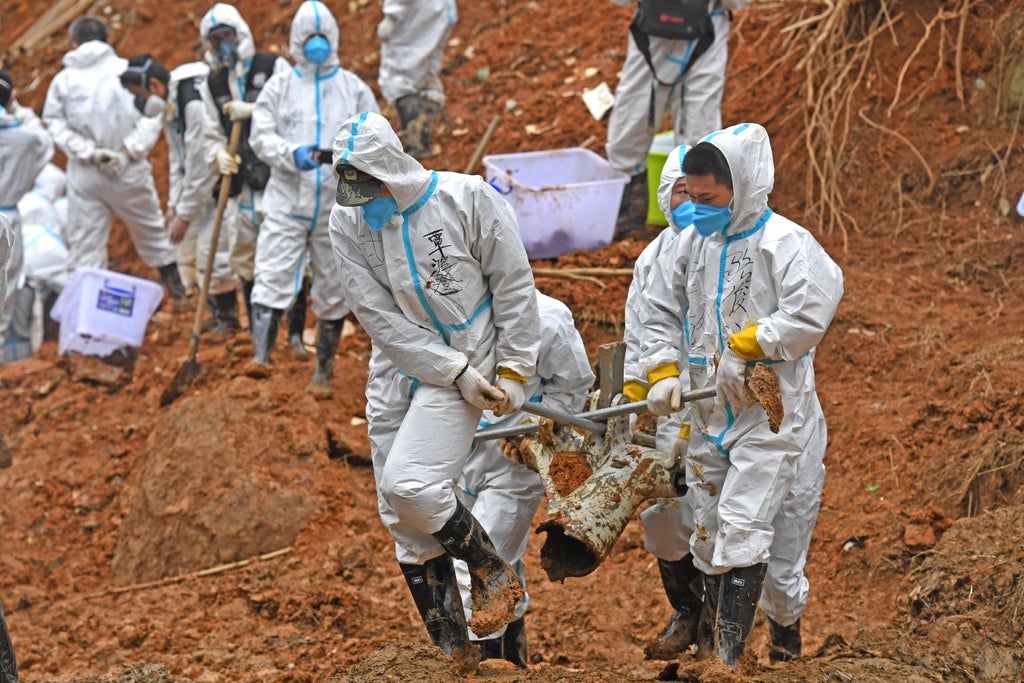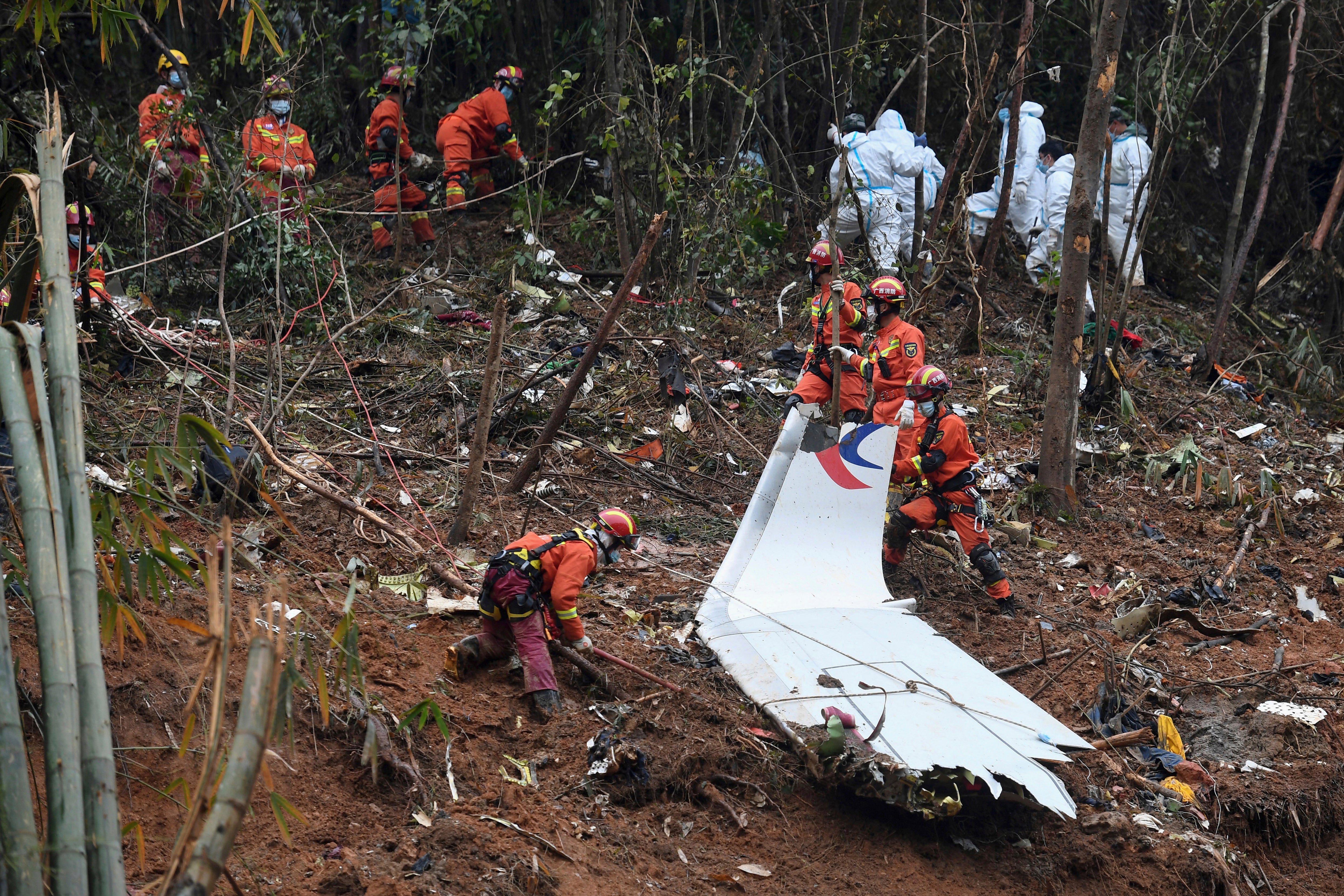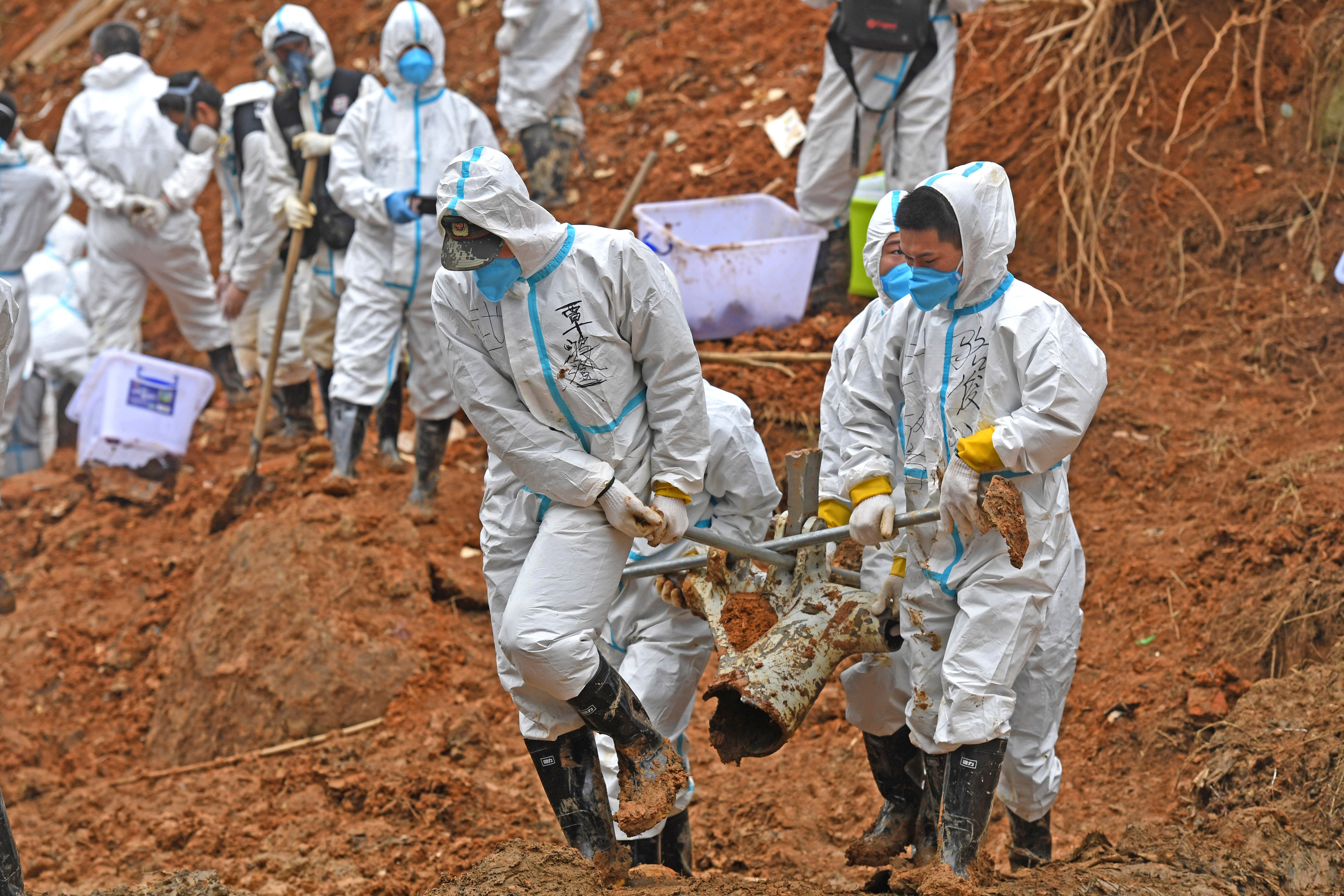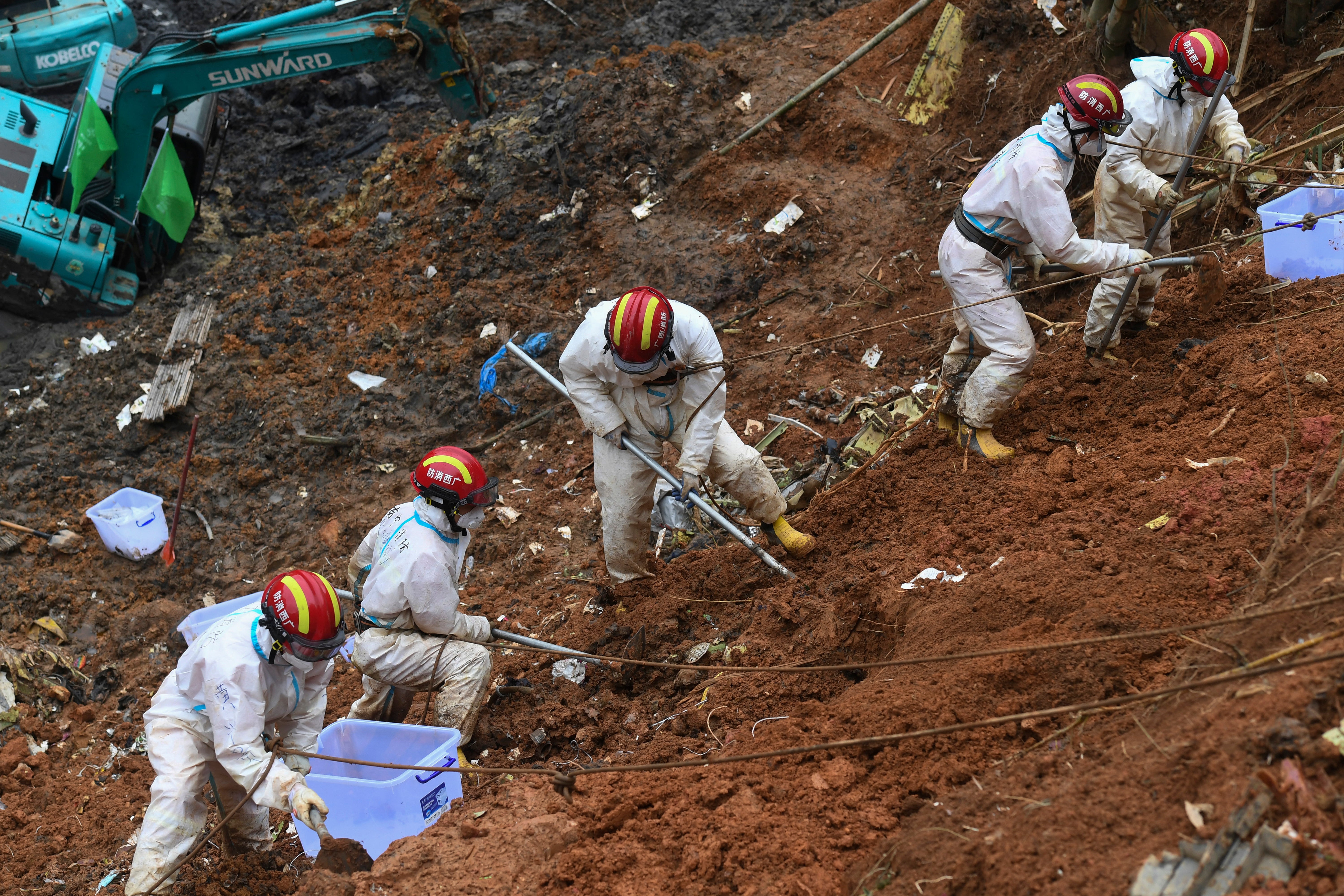
Rescue workers searching for wreckage from last week’s crash of a China Eastern passenger plane are “basically done,” after 49,000 pieces of debris were found.
Flight MU5735 took off from the southwestern city of Kunming, capital of the Yunnan province, on 21 March and was headed to Guangzhou, in the southeast of China, when it nosedived from 29,000ft into a mountainside in the Guangxi region, killing all 132 people on board.
A rescue mission was immediately put in place, with China’s president Xi Jinping calling for an “all-out” investigation to find out what caused the worst air disaster the country has seen for almost three decades.
Meanwhile, China’s civil aviation authority grounded all Boeing 737-800 aircraft – the same kind as the one that crashed – while authorities worked to come up with an explanation.

Zhu Tao, director of aviation safety for the Civil Aviation Administration of China, announced at a news conference on Thursday that important parts of the plane had been recovered – including both black boxes.
Speaking from Wuzhou, one of the nearest cities to the crash site, Mr Zhu said that the aircraft’s horizontal stabiliser, its engine and remains of the right wing tip had been found after 10 days of searching, the Xinhua news agency reported.
The immense impact from the crash created a 65ft-deep crater, started a forest fire and smashed the plane into small parts scattered over a wide area, some of them buried underground, officials said.
As of today, workers had excavated more than 800,000 cubic feet (22,600 cubic metres) of soil and found 49,117 pieces of the plane, a Guangxi government official told reporters.
While largely successful in terms of what it recovered, the search was made more difficult by rain and muddy conditions in the remote and steep location where the Boeing plane crashed, the official added.

Investigators said they had managed to recover both black boxes belonging to the aircraft. The cockpit voice recorder, which captured communications between the pilots, was found two days after crash, on 23 March. The flight data recorder – tracking several dozen variables – was dug up three days later.
Both have been sent to Beijing for examination and analysis, Mr Zhu said at the press conference.
The investigation into the cause of the crash faces several challenges, including why the plane plunged without warning, why air traffic controllers got no reply from the pilots after it started falling, and why the pieces of debris are so small.
There is also the issue of who, or what, is ultimately responsible, which competing bodies are keen to find out. On Tuesday, the National Transportation Safety Board (NTSB) said a team of US investigators comprising personnel from Boeing and the Federal Aviation Administration had secured invitations to join the probe led by Chinese authorities.

However, the international team’s date of arrival and adherence to China’s strict quarantine regulations remain under discussion with the country’s foreign ministry.
The plane’s engine manufacturer CFM will also support the investigation but it will not send anyone to China, according to the NTSB, following earlier reporters that company representatives would be part of the travelling team.
Aviation authorities remain perplexed at what caused the crash, which they said took place in “fair weather” and marked China’s deadliest such incident since 160 people were killed on a China Northwest Airlines flight in 1994.
Over the weekend, rescuers said all 123 passengers and nine crew members on board Flight 5735 had died in the crash. Their identities were confirmed through DNA tests this week.
Chinese officials said a preliminary investigation report could be expected within 30 days of the crash (20 April), which they hoped would go some way to explaining what happened.







